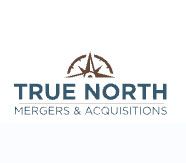The Challenge of M&A Technical Due Diligence

True North Mergers & Acquisitions
January 2, 2024

Technology mergers are notoriously difficult to pull off, and a big part of the reason is ensuring that the two companies' technologies are compatible. That's where technical due diligence comes in. Unfortunately, it's often easier said than done.
In this blog post, we'll explore the challenges of conducting effective technical due diligence in an M&A situation. Hopefully, by understanding these challenges, you'll be better equipped to overcome them if you're ever in such a situation. Thank you for reading!
Understanding the Technology Due Diligence Challenge
When two companies merge, they must ensure that their technologies are compatible for the merger to be successful.
The risk associated with incompatible code between the two companies is that the end product may need to be more consistent, which can result in a bad user experience. Not only must there be compatibility between both sets of technology, but it must also remain stable when any future changes are made.
If the code does not stay consistent over time, it can become more difficult to maintain and update regularly, thus leading to potential reengineering instead of integrating existing code. Furthermore, it also exposes organizations to vulnerabilities if non-original code is used without careful consideration.
Technology Due Diligence Requires Experienced Resources and Execution
Technical due diligence can be an intricate process for mergers and acquisitions. It examines the technological components of the two companies, focusing on overall technology stack alignment, similar technology platforms, and coding languages, as well as a line-by-line code analysis.
Key to this process is evaluating where the technologies are in alignment and identifying any potential gaps that must be addressed. Then, a plan can be created to address those code gaps. Overall, technical due diligence aims to ensure the compatibility of two merging technologies while preparing those involved parties with the information they need to respond to identified risks.
The Cost Benefit of Getting it Right the First Time
The importance of ensuring the compatibility of two integrating companies' technologies cannot be underestimated. Non-compatible technologies can lead to a costly scenario of having to recreate code modifications, and the timeline will be much longer, defeating the purpose of the merger in the first place.
What's more, while attempting to fix this issue, there is a potential for bugs and usability gaps resulting from too hastily executed coding that puts the company at risk of customer attrition if not done properly. Therefore, it is essential for both parties to properly assess technology overlaps as well as any potential issues before deciding to merge.
Performing this Important Process Can Make or Break a Merger
For any merger to be successful, the technical due diligence process is absolutely paramount. Companies must avoid technology integration mismatches and determine potential risks before completing a deal.
It is also important to understand the timeline of expected integration to establish workflow operations and tactics that may minimize customer loss risk. Ultimately, the costs of overlooking or rushing through this critical aspect of a merger are greatly outweighed by the immense benefit that comes from getting it right in the first place.
Turn to True North for Technical Due Diligence
Technology mergers are complex undertakings that require special care when it comes to technical due diligence. Without properly investigating the compatibility of the two companies' technologies, organizations risk significant financial losses and damage to their reputations. Companies must have access to proper technical due diligence protocols to ensure success when attempting a merger. Such protocols should be adapted for each deal in recognition of how unique and nuanced different mergers can be.
At True North, we understand the importance of technology M&A due diligence and are here to provide our expertise. Our tech M&A advisors use decades of experience to help craft tailored due diligence strategies that help pave the way for successful mergers between businesses. Let us help you get your technology due diligence process right – contact True North today for more information about how we can assist with your goals.
Subscribe to our Newsletter
Sign up for the latest industry insights from True North Mergers & Acquisitions.

SELLING A BUSINESS
How Do I Get My Tech Business Ready to Sell? Understand These Factors Before You Sell Your Tech Business

PLANNING
How to Jumpstart the Planning Process Following a Process Ensures Positive Results

SELLING A BUSINESS
If You Don’t Uncover the Skeletons in Your Closet, Your Buyer Will Don’t Miss This Important Step in Selling Your Business


